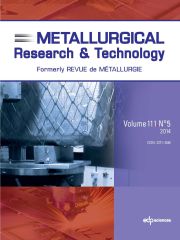Article contents
Emergy-based mid-point valuation of ecosystem goods andservices for life cycle impact assessment
Published online by Cambridge University Press: 10 July 2013
Abstract
Ecosystem goods and services (EGSs) are of crucial importance for the economic and socialdevelopment of human communities. The well-established life cycle assessment (LCA) methodis facing a number of challenging improvements to define new Characterization factors(CFs) for life cycle impact assessment (LCIA) of EGSs. Very recently, extensive workconducted under the UNEP/SETAC Life Cycle initiative has been completed with the goal ofproviding new LCIA methods and spatially differentiated mid-point CFs for land use andland use change impacts on biodiversity and ecosystem services. However, the implementedmodels do not enable one to assess the actual damage to ecosystem functionality, and thusthe relationship among EGSs and related areas of protection (e.g. AoP of “NaturalResources”) remains undefined. This paper aims at investigating the potentialcharacterization ability of the Emergy method for LCIA of EGSs. The goal is to use theextensive libraries of Unit Emergy Values (UEVs) of primary services and resources as CFsfor LCIA to evaluate the physical contribution of EGSs in supporting life cycle processes.Having its roots in thermodynamics and systems ecology, Emergy can appraise a larger andmore diversified (than LCA) number of EGSs through a common physical denominator, i.e. thesolar emjoule or seJ, which measures the solar energy embodied in natural products. Emergythus has a typical Nature-oriented perspective, accounting for the available energy thatis used up by the natural cycles, directly and indirectly, to generate biotic and abioticresources. A library of selected UEVs (more than 100) for biophysical EGS valuation hasbeen framed including values collected from the Emergy literature and formulated on thelatest planetary baseline (i.e. 15.2E + 24 seJ/yr). Advantages and limitations for futureapplication of these values toward an LCIA mid-point impact characterization of Emergy arediscussed. UEVs may represent mid-point LCIA factors for ecological contribution analysis,enabling one to account for the memory of energy previously required to produce EGSs,which can be used as a proxy to assess the future environmental work necessary toregenerate the used EGSs. However, the added value of Emergy for LCA is still debated,mainly because of the low accuracy and unclear meaning of the UEVs in relation to theavailability of resources. Therefore, Emergy can be conceived as a suitable physicalmeasure complementary to the economic valuations and current “user-side” tools applied inLCA.
Keywords
- Type
- Research Article
- Information
- Copyright
- © EDP Sciences 2013
References
- 17
- Cited by


